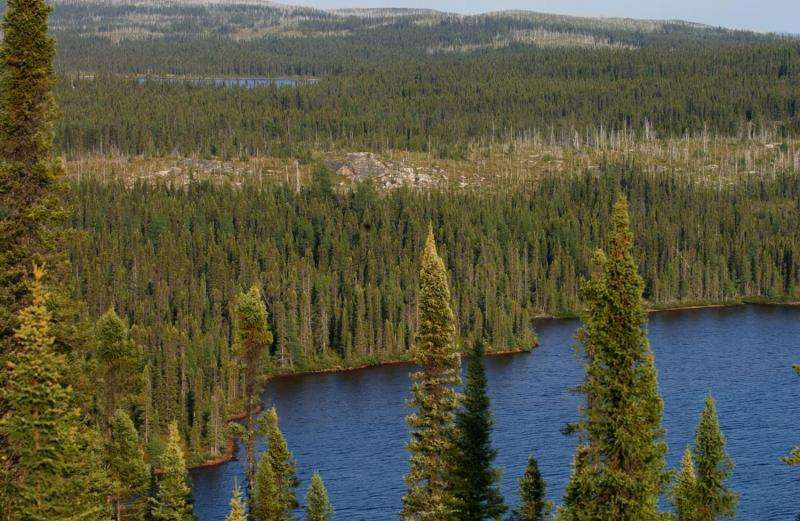This article has been reviewed according to Science X's editorial process and policies. Editors have highlighted the following attributes while ensuring the content's credibility:
fact-checked
peer-reviewed publication
trusted source
proofread
Swedish study shows secondary forests more sensitive to drought than primary forests

The dry summer of 2018 hit Swedish forests hard—and hardest affected were the managed secondary forests. This according to a new study from Lund University in Sweden.
Northern boreal forest ecosystems are predicted to experience more frequent summer droughts in the future. The majority of Swedish forest are secondary forests that are managed commercial forests with little diversity in species and structure. Only a small part is made up of primary forests that have experienced limited direct human impact.
So far, it has not been known how primary forests and managed secondary forests react to drought. In a new study published in the journal Environmental Research Letters, a team of researchers led from Lund, analyzed how the drought of 2018 affected the forest types.
"We used a unique map of primary forests in Sweden and investigated whether there might be any difference in how these forests and neighboring secondary forests were affected by the drought in 2018. The results showed that secondary forests in Sweden were more affected by the drought than primary forests were," says Anders Ahlström, researcher in physical geography at Lund University.
In the study, researchers used satellite images and a map detailing more than 300 primary forests in Sweden. By analyzing a high-resolution vegetation index over these and the buffer zones surrounding the primary forests, which represent secondary forests with a similar environment and drought situation in summer 2018, the research team were able to gain a picture of how the dry summer hit the different forest types.
"That primary forests were less affected by drought leads to a number of interesting follow-up questions about what causes this difference. It could be the trees' generally greater age and size that perhaps leads to deeper roots and more structural diversity. Or it could be that there is more water in these ecosystems, perhaps because they haven't been ditched. Right now though, we have no idea what makes primary forests more stable during drought," says Julika Wolf, former physical geography researcher, now a consultant on cartography and spatial analysis.
Primary forests are rare in Sweden and in Europe. They represent the most untouched forests we have left, and they inform us of how nature looks and how it functions without major direct human impact. The forests, therefore, are especially important in understanding how environmental changes and human land use affect ecosystems and their processes.
"This study is a good example of how we can use these primary forests in our research. In this case, we see that they are more stable during drought when compared with secondary forests that have been exposed to change such as felling, planting, ground preparation and ditching," concludes Anders Ahlström.
More information: Julika Wolf et al, Canopy responses of Swedish primary and secondary forests to the 2018 drought, Environmental Research Letters (2023). DOI: 10.1088/1748-9326/acd6a8
Journal information: Environmental Research Letters
Provided by Lund University


















